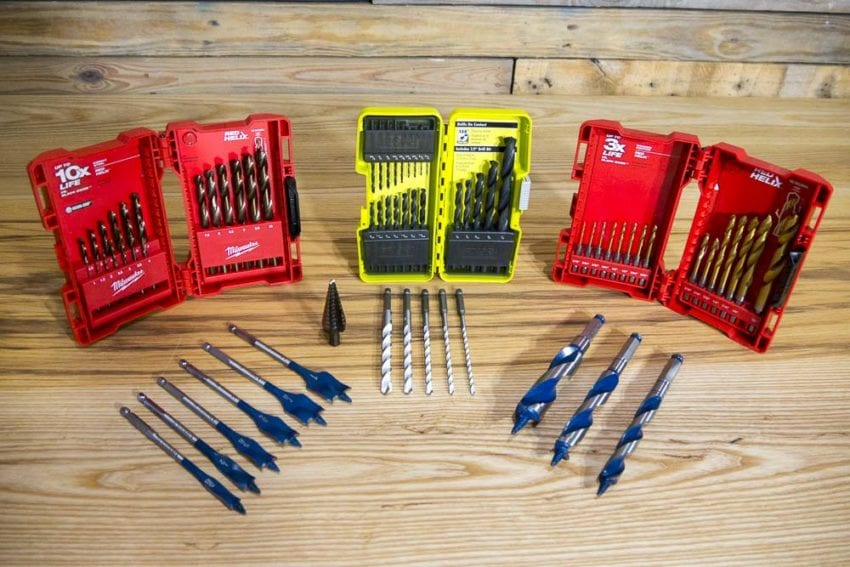The Complete Drill Bits Safety Guide

Using drill bits safely requires an understanding of how to properly use them. After all, there’s a reason the old saying ‘use the right tool for the job’ is indeed such an old saying. When the right drill bit is used with the right know-how there’s the chance for a safe job to get done. So let’s look now at the essential information a drill bit user should know.
Know the Possibilities and Limits of the Drilling Material
Oftentimes using a drill bit can be unsafe because of the material in which the drill bit is used.
There are drill bits made to drill into relatively soft material, just as there are drill bits made to penetrate hard material. But using an incorrect one that does not match the task and material could be dangerous. Once it’s been established which material the drill bit will be used in, a drill bit can then be selected which can perform the task properly and safely.
Know the Proper Uses of a Particular Drill Bit
Although all drill bits share some common features, there are also big differences among the range given they come in varying shapes and sizes. They also are made of a variety of materials such as brass, cast iron, and stainless steel. Not all drill bits are made equal, and this means establishing which one is the best to be used for a task is key. For example, an adjustable wood drill bit can perform well in wood, but isn’t as versatile as a step bit made of brass.
If in Doubt Don’t Proceed
Whenever there’s concern a job may be unsafe to do it’s always essential to not proceed on, and seek professional advice. This is the case with drill bits, just as it is with essentially any tools. The reality is that using the wrong drill bit could result in slippage or breakage of the material the drill is drilling into. This in turn could cause a drill user to trip or otherwise injure themselves.
Check Drill Bits Are in Good Working Order Regularly
Like other pieces of equipment, over time drill bits can wear down, or otherwise become unsuitable for use. Using a drill bit that isn’t in top condition can be dangerous. That’s why as well as getting in the habit of regularly checking drill bits before use, it’s also prudent to check they are still in good working order at safe intervals while pursuing a task. It only takes a couple of seconds to check a drill bit is in good condition, and it’s a wise habit to build to help ensure they’re used safely.
The Essential Bits about Drill Bits
Finding the right drill bit takes some time, but it’s time well-spent. By knowing the possibilities and limits of a drill bit material, and the proper uses of a drill bit, the safety risks of their use can be minimized. These risks can be minimized further by remembering ‘if in doubt don’t proceed’, and also checking drill bits regularly to ensure they’re in good condition and fit for continued use.
How do you use Drill Bit Properly…
Sure, using drill bits is easy! – Just squeeze the trigger and plunge the spinning bit into the work piece paying no regard to any potential dangers. Hmm! Not quite. Using drill bits like blocked premature wear and even breaking. Obviously, the thinner the bit is, the weaker and more easily it can snap. One must be especially careful when drilling through steel, hard metals, or even thick wood with thinner bits.
Bits under 3 mm in diameter will snap rather easily when subjected to bending stresses. Which means if you allow your bit to enter the work-piece crooked, attempt to change the direction of the bit once it’s already partially inside the work-piece, or even just apply too much force, you run the risk of breaking your bit – or at the least, causing undue wear. Bits are generally not flexible! Remember this when you’re tempted to use your bit for something it’s not meant for.
Another point is removing your bit from the work-piece periodically and shaking off the shavings. Failing to achieve this results in “burning”, as the flutes will jam up with these shavings and cause excessive friction. The high temperatures caused by this process will weaken the metal and render it more susceptible to wear. This is why you should use a lubricant of some kind such as motor oil, when drilling through steels and other tough metals.
Simply dip the tip of the bit into the oil every now and then throughout the drilling process. Simply by using a lubricant, you can preserve the friction down, and by keeping the friction down, you will keep the temperature down, thereby prolonging the lifespan of the bit. The lubricant also enables the bit to “slip” right past potential binding spots in metals, which can otherwise be quite damaging to your bit.
